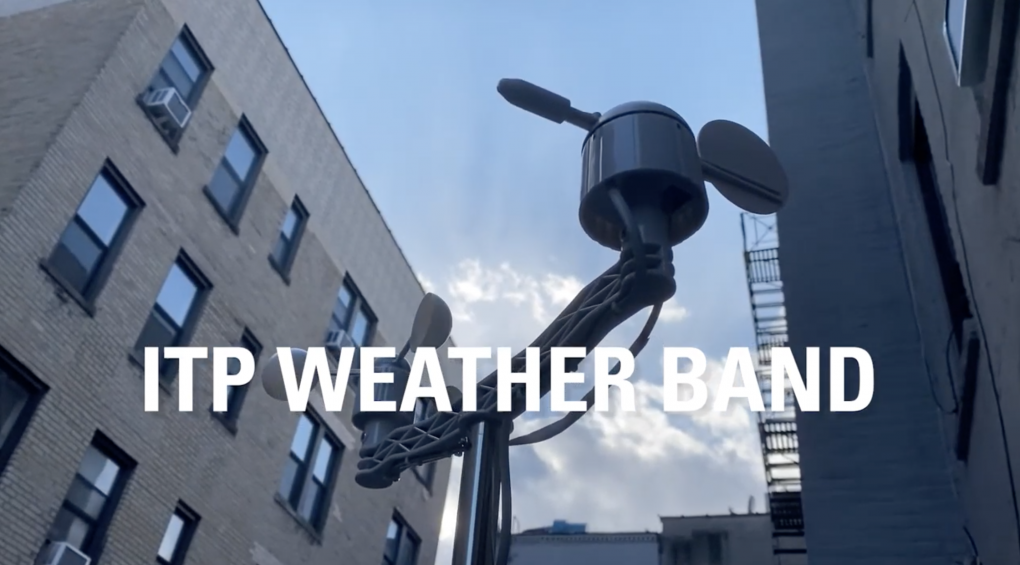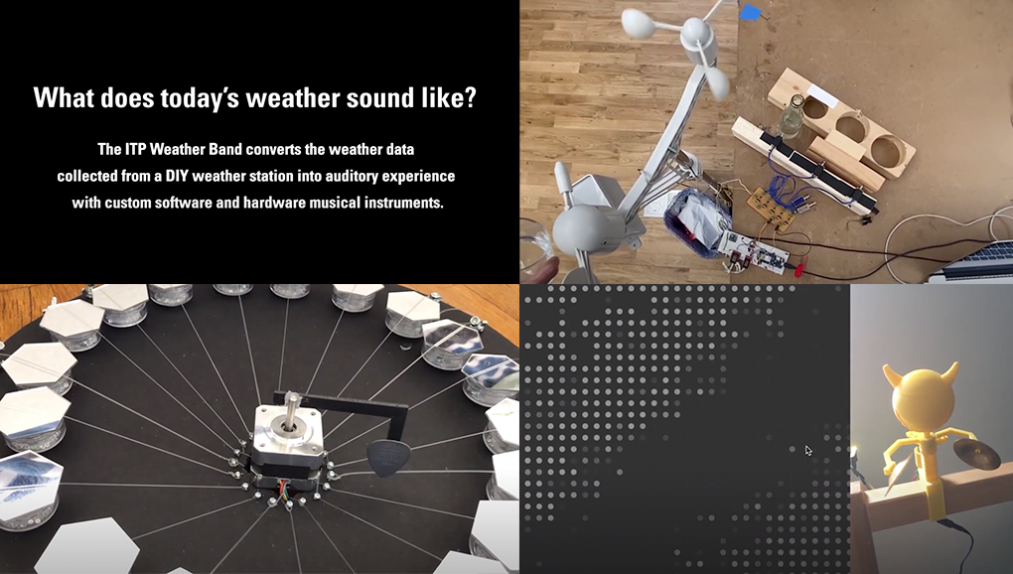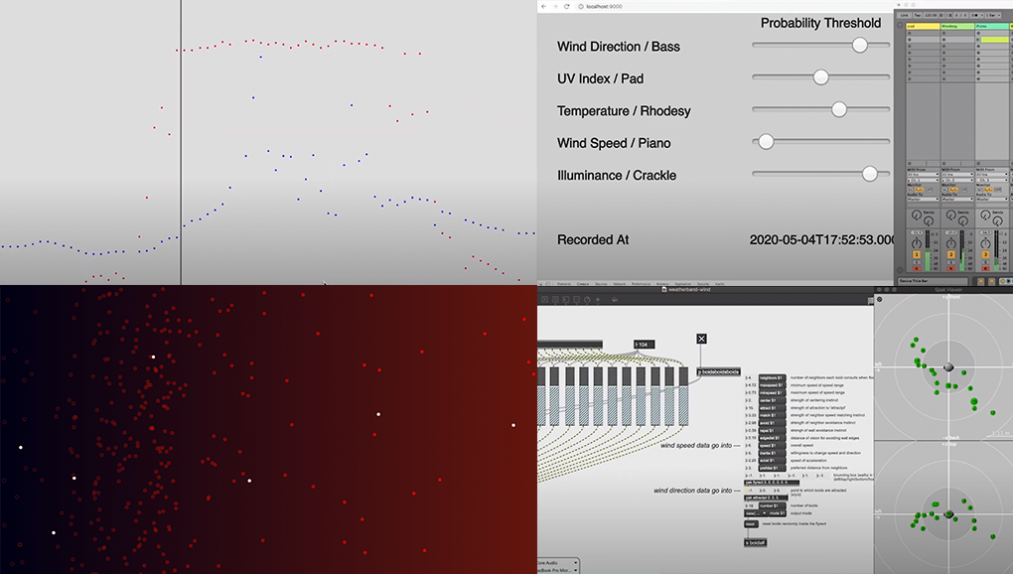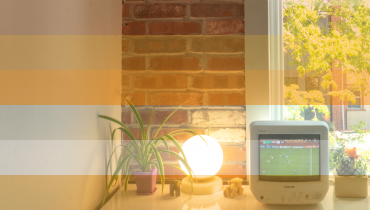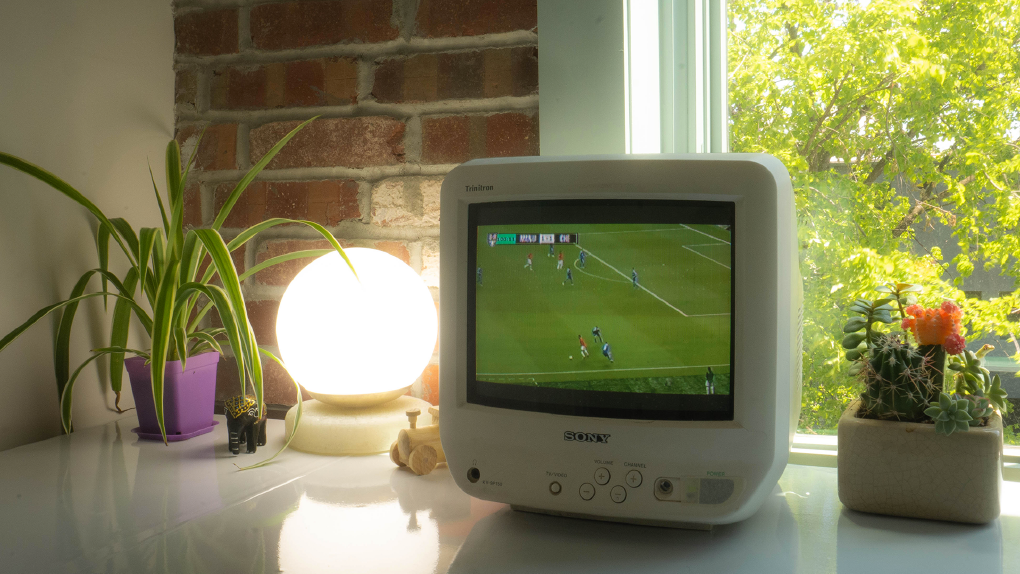ITP Weather Band is an experimental band creating music by playing weather data collected from a DIY weather station with custom software and hardware musical instruments. Come see our debut performances!
Arnab Chakravarty, Atchareeya Name Jattuporn, Brent Bailey, Sid Chou, Chun Song, Nuntinee Tansrisakul, Schuyler DeVos, Yeseul Song
Description
What does today’s weather sound like?
ITP Weather Band is an experimental band creating music by playing weather data collected from a DIY weather station with custom software and hardware musical instruments. The band uses sound and music as a medium for delivering information about our immediate environment through the auditory sense.
We have been working together both in-person and remotely for the past semester as a group to implement the weather station system that collects a variety of weather data with environmental sensors and post the data to a database. Each band member created a unique musical instrument that gets the weather data from the database and turns them into weather-themed auditory sound and music.
This is the band’s debut performance where we introduce the weather station system and demonstrate the musical instruments in show & tell style.
Come join us!
🥁 Line-Up
– Introduction: Meet the Weather Band and the Weather Station system!
– Temperature Bells by Schuyler W DeVos: The playback rate of a bell is mapped from 0.1-2 across a list of temperature readings for a week. Colder temperatures make the bells slower, warmer temperatures make the bells faster.
– Wind Visualizer and Cymbals Monkey by Sid Chou: Wind Visualizer is a simple physics simulation to spatialize experience of wind. Cymbals Monkey is a cheerful robot that plays cymbals based on wind gust data.
– Spatial Wind Sound Composition by Chun Song: Simulate a spatial sound experience of being an extraterrestrial being who would hear sounds as particles or overtones laid out in space. Some partiels would be blown away by winds.
– Wind Guitar by Atchareeya Jattuporn (Name): An instrumental sculpture that can be collaboratively performed by humans and nature. The sculpture will visualize wind directions measured from the ITP weather station in the form of sound.
– Weather Radio by Nuntinee Tansrisakul: Tune-in to the weather station in East Village, NY.
– Weather Lamp by Arnab Chakravarty: An interactive lighting object that turns abrupt changes in weather visualized as soft patterns
– The Weather, Probably by Jesse Simpson: An interactive MIDI score generator where the user decides the relevance of each weather event.
🧸 Credits
– Faculty Leads/Advisors: Yeseul Song, Tom Igoe
– Weather Station System Development: Brent Bailey, Arnab A Chakravarty, Yeseul Song, and previously Rushali Paratey
– Weather Station System Development Support and Advisement: Tom Igoe
🌤 Weather Station
The weather station is currently installed in East Village in Manhattan during the quarantine, but will be moved back to 370 Jay once the building opens again.
* ITP Weather Band is presented by ITPower, a research group that explores ways to contribute to a sustainable future with creative uses of technology.

